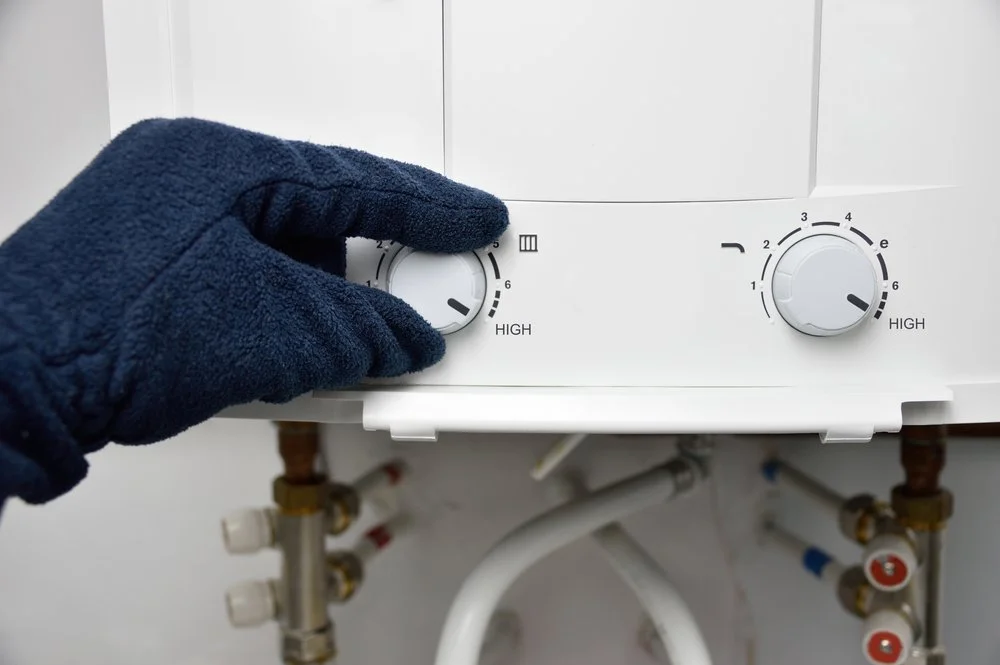[8 Problems & Fixes] Troubleshooting Tankless Water Heater Problems
Are you tired of taking cold showers or waiting forever for your tankless water heater to warm up? Does waiting for your tankless heater to warm up make you cringe? You're not alone.
Tankless water heaters are a popular choice for their energy efficiency and endless hot water supply, but they can also come with their own set of problems. From mineral buildup to ignition failure, troubleshooting these issues can be daunting. But fear not!
In this comprehensive guide, we'll walk you through 8 common tankless water heater problems and easy fixes to recharge your hot water. Say goodbye to chilly mornings and hello to a hot, relaxing shower. Let's dive in!
8 Common Tankless Water Heater Issues and Their Fixes
Here are some common problems of tankless water heaters and potential troubleshooting steps you can follow to fix them and get them up and running again.
1. No Hot Water is Coming
If you turn on your hot water faucet and nothing but cold water comes out, you may be experiencing a no-hot water issue with your tankless water heater. This can be frustrating and inconvenient, mainly if you rely on warm water for daily tasks like bathing, washing dishes, or laundry.
Ways to Fix:
Fix #1: Check for Power Supply
First, check to ensure your tankless heater receives power. Check that the circuit breaker hasn't tripped if it's an electric unit. If it's a gas unit, ensure the gas supply valve is open and the pilot light is lit.
Fix #2: Check the Water Supply
Another common reason for no hot water is a problem with the water supply. Check to ensure the water supply valve is open, and there is no blockage in the pipes. If the water supply is blocked, you may need to call a plumber to fix the issue.
Fix #3: Check the Heating Element or Burner
If the heating element or burner is faulty, it can cause a no-hot water issue. Check to ensure the part or burner is clean and debris-free. If it's dirty, clean it with a soft brush and some water. If it's damaged or worn, it may need to be replaced.
2. The Water is Too Hot
If your tankless water heater produces too hot water, it can be uncomfortable and dangerous. There are a few different reasons why this might be happening.
One possible cause is the unit's temperature is set too high. Check the temperature setting and adjust it if necessary. Another potential cause is a malfunctioning thermostat. If the thermostat is not functioning correctly, it may need to be replaced.
Ways to Fix:
Fix #1: Check the Temperature Setting
The first thing to check is the temperature setting on your tankless water heater. Make sure it's set to a safe and appropriate temperature. The recommended temperature is 120 degrees Fahrenheit to prevent scalding.
Fix #2: Check the Thermostat
The problem may be with the thermostat if the temperature setting is correct. Check the thermostat and make sure it's functioning correctly. If it's malfunctioning, it may need to be replaced.
Fix #3: Check for Scale Buildup
Another possible cause of boiling water is scale buildup inside the unit. Scale buildup can cause the water to heat too much and damage the team over time. If you suspect scale buildup, consult a professional to have the unit cleaned.
3. Low Water Pressure
Low water pressure can be a frustrating issue with tankless water heaters. It can cause slow or weak water flow, which can affect the performance of your unit. There are several reasons why you might be experiencing low water pressure.
The possible reason for this issue can be a clogged aerator. The aerator is the small screen located at the end of the faucet. Over time, it can become clogged with sediment or debris, affecting water flow. Another possible cause of low water pressure is a clogged filter in the unit. If the water filter is clogged, it can restrict water flow and cause low pressure.
Ways to Fix:
Fix #1: Clean the Aerator
To clean the aerator, unscrew it from the faucet and rinse it under running water. Scrub any debris or sediment using a small brush if it is clogged. Once it is clean, reattach it to the faucet.
Fix #2: Clean the Water Filter
To clean the filter, turn off the water supply to the unit and remove the filter. Rinse it under running water and use a soft brush to remove debris or sediment. Once it is clean, reattach the filter and turn the water supply back on.
Fix #3: Check the Water Pressure Regulator
The water pressure regulator is a valve that controls the pressure of the water entering your home. If the regulator is too low, it can cause low water pressure throughout your home, including your tankless water heater. Consult a professional to adjust the regulator if necessary.
Also Read: 6 Tips for Choosing the Best Heating Repair Service
4. The Unit is Too Noisy
Tankless water heaters are known for their quiet operation, but if your unit makes unusual noises, it can cause concern. There are several reasons why your tankless water heater might be making noise.
There are various reasons behind the noises produced by the unit during its operation. One plausible explanation is that a part or component is not firmly fixed, resulting in clattering or banging sounds. Another potential reason could be the accumulation of sediment or scale within the unit, which creates a hissing or popping sound as the water heats up.
Ways to Fix:
Fix #1: Tighten Loose Components
If you suspect a loose part is causing the noise, turn off the power to the unit and inspect the components. Tighten any loose screws or connections that you find. If you are not comfortable doing this, consult a professional.
Fix #2: Flush the Unit
To remove sediment or scale buildup, flush the unit according to the manufacturer's instructions. This typically involves turning off the power and the water supply and connecting a hose to the unit's flush valve. Open the gas valve and let the unit flush for several minutes.
Fix #3: Check the Gas Pressure
If the noise results from a gas issue, check the gas pressure to ensure it is within the manufacturer's recommended range. If it is not, consult a professional to adjust the gas pressure.
5. Discolored Water and An Unpleasant Odor
If your tankless water heater produces discolored water or an unpleasant odor, it can be a sign of a problem. Discolored water can be caused by rust or sediment buildup in the unit, while an unpleasant smell can be caused by bacteria growth.
Ways to Fix:
Fix #1: Flush the Unit
Flushing the unit can help remove sediment and rust buildup, improving water quality. To wash the team, turn off the power and water supply, and connect a hose to the unit's flush valve. Open the valve and let the unit flush for several minutes.
Fix #2: Use a Water Softener
If your water is hard, it can contribute to a sediment buildup in the unit. Consider installing a water softener to reduce the hardness of your water.
Fix #3: Use a Chlorine Treatment
If bacteria growth is causing the odor, consider using a chlorine treatment to disinfect the unit. Consult a professional to determine the appropriate treatment and dosage for your team.
6. The Burner Doesn't Ignite
It can be both frustrating and risky if the burner of your tankless water heater fails to ignite. There could be numerous reasons behind this issue. One explanation could be that the unit is not getting sufficient gas supply. Another possibility could be a malfunctioning igniter or a flame sensor. The efficiency of these parts can also be hampered due to the accumulation of dirt, debris, or corrosion.
Ways to Fix:
Fix #1: Check the Gas Supply
Ensure that the gas supply to the unit is turned on and that there are no leaks in the gas line. If the gas supply is on and there are no leaks, check the gas pressure to ensure it is within the manufacturer's recommended range.
Fix #2: Clean the Igniter and Flame Sensor
Dirt, debris, or corrosion can affect the performance of the igniter and flame sensor. Use a soft brush or cloth to clean these components and remove buildup.
Fix #3: Replace the Igniter or Flame Sensor
If cleaning the igniter or flame sensor does not solve the problem, it may need to be replaced. Consult the owner's manual or a professional to determine the appropriate replacement parts.
7. Water Temperature Fluctuation
It can be troublesome if your tankless water heater is not maintaining a steady water temperature. The cause for this could be a blocked filter which hinders water movement and thus disrupts the appliance's performance. Some other parts, such as the thermostat or temperature sensor, may also malfunction and require replacement to solve this issue.
Ways to Fix:
Fix #1: Clean the Filter
To clean the filter, turn off the power and water supply to the unit, and remove the filter. Rinse it under running water and use a soft brush to remove debris or sediment. Once it is clean, reattach the filter and turn the power and water supply back on.
Fix #2: Adjust the Temperature Setting
If the temperature setting is not the issue, adjust the temperature setting on the unit. Consult the owner's manual for instructions on how to do this.
Fix #3: Replace the Thermostat or Temperature Sensor
The thermostat or temperature sensor may malfunction if the temperature setting and filter are not the issues. Consult a professional to diagnose and replace these components if necessary.
8. The Tankless Water Heater is Leaking
If your tankless water heater leaks, it can be a severe predicament that must be attended to promptly. A few underlying reasons explain this situation. A connector or attachment may have become detached due to frequent use. Over time, these parts could get looser and cause spillage. On the other hand, the water pipe could be damaged or decayed, forcing you to replace it.
Ways to Fix:
Fix #1: Turn Off the Water Supply
If you notice a leak, turn off the water supply to the unit immediately to prevent further damage. Then seek professional help to get it fixed.
Fix #2: Inspect the Unit
Inspect the unit and surrounding area for visible signs of damage or corrosion. Tighten any loose connections or fittings that you find. If the water line is damaged or corrupted, consult a professional to have it replaced.
Fix #3: Check for Condensation
In some cases, what appears to be a leak may be condensation. Check the unit for signs of condensation, such as moisture on the outside of the team. If it is condensation, there is likely no cause for concern.
Contact GS Mechanical for a Professional Fix to Your Tankless Water Heater
Now that you know, tankless water heaters are an excellent option for their energy efficiency and endless hot water supply. However, they can experience problems just like any other appliance.
If you are experiencing any issues we covered in this article, don't hesitate to contact GS Mechanical for a professional fix. Our team of experts has the knowledge and experience to diagnose and repair any issue with your tankless water heater quickly and efficiently.
Don't let a malfunctioning tankless water heater ruin your day - contact GS Mechanical today and get your hot water flowing again!


